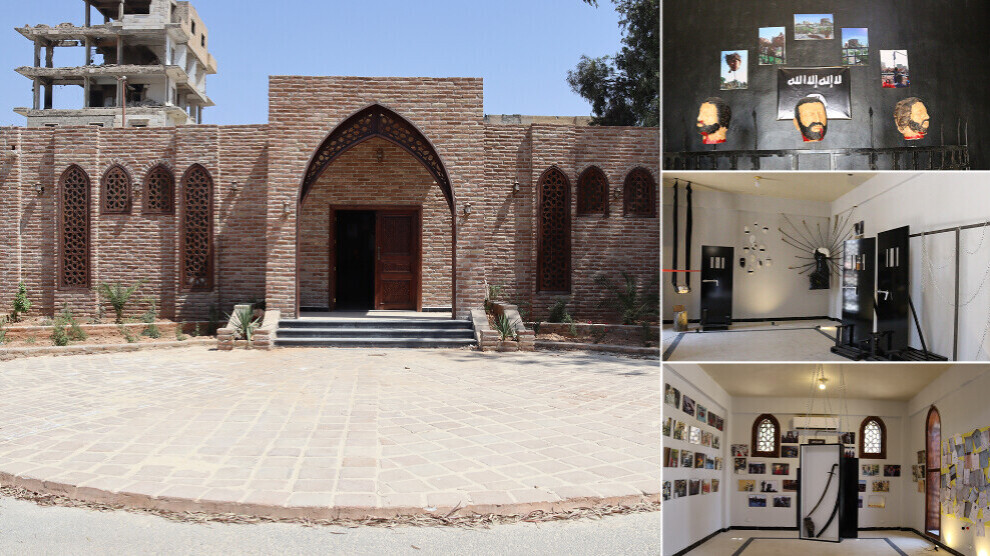Museum in Raqqa documents atrocities committed by ISIS
The museum opened in Raqqa by the Culture and History Board of the Autonomous Administration of North and East Syria documents the atrocities and crimes committed by ISIS against people between 2014 and 2017.

Raqqa- The Culture and History Board of the Autonomous Administration of North and East Syria (AANES) opened a museum on May 20, 2025 to shed light on the atrocities and crimes committed by ISIS against the residents of Raqqa and archaeological sites between 2014 and 2017.
“This museum was opened to show the resistance of people against the crimes and rights violations committed by ISIS,” said Sarfraz Sharif, Co-chair of the Culture Authority of North and East Syria. The period when Raqqa was under the control of ISIS “was a dark age before rebirth for the people of the region.”
The museum was opened after collecting all documents for about one and a half years. “We collected documents, photographs and objects from the people, who had witnessed the atrocities of ISIS.”
Museum also documents the resistance against ISIS
The museum also aims to shed light on the resistance of the people against ISIS and the efforts of the fighters of the Syrian Democratic Forces (SDF) and the Women's Defense Units (YPJ), who sacrificed their lives to liberate the region from ISIS, Sarfraz Sharif told NuJINHA.
“The liberation of the region from the terrorist group, ISIS, was like a new birth for the people.”
The museum is divided into four areas: Photographs and Testimonials, Objects and Sculptures, Documents and Orders and Rights Violations against Women.
“The first area exhibits the methods of execution and torture of ISIS against people and how ISIS used children as soldiers and washed their brain. The photographs exhibited at this area show how ISIS killed, abducted people and forced children to carry out suicide attacks,” Sarfraz Sharif said.
In the second area, the objects used by ISIS (swords, knives, machetes, etc.) to kill people are exhibited. “The sculptures exhibited at the museum represent executions carried out at the square by ISIS,” she told us, saying the third area showing the official documents of ISIS, including the orders by ISIS to execute people.
Crimes against women are exhibited in a special area at the museum. “The statue of a woman dressed in black and chained represents how ISIS oppressed women. Photographs showing how Yazidi women were sold in slave markets are also exhibited in this area.”
The museum also aims to raise awareness in society to prevent possible atrocities and crimes from being committed in the future, Sarfraz Sharif emphasized. “Although the region was liberated from ISIS, there are still ISIS sleeper cells. Therefore, our people must always be aware of the threat posed by ISIS.”
